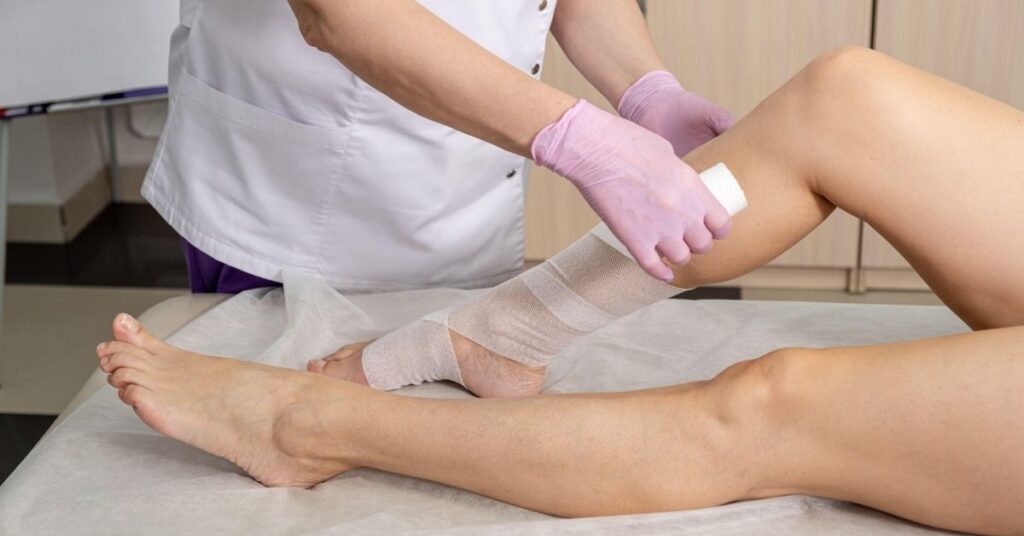Lymphedema, a condition that causes swelling due to a lymphatic system blockage, affects millions worldwide. It often occurs after surgeries, particularly cancer treatments, or as a result of trauma or infection. While managing lymphedema is lifelong, regular checkups ensure optimal patient health outcomes. These checkups are more than just routine visits to the doctor; they are vital to preventing complications, managing symptoms, and maintaining a good quality of life. In this article, we’ll dive into why regular checkups are essential for lymphedema patients and how they contribute to long-term health.
What is Lymphedema?
Before diving into the importance of regular checkups, it’s essential to understand lymphedema itself. Lymphedema occurs when lymphatic fluid builds up in tissues, causing swelling, typically in the arms or legs. The lymphatic system, which helps fight infections and clear waste from the body, can be disrupted for various reasons. For many people, lymphedema is a chronic condition that requires careful monitoring and management.
Why Are Regular Checkups Crucial for Lymphedema Patients?
Regular checkups are a fundamental part of managing lymphedema patients’ condition. These checkups provide a clear, professional assessment of the condition’s progression, helping to catch early signs of complications. Early intervention is essential in preventing the condition from worsening and reducing the risk of additional health problems.
Detecting Early Signs of Complications
Lymphedema is progressive, meaning it can worsen over time if not properly managed. Early detection of worsening symptoms allows timely intervention, preventing more severe complications such as infections, skin ulcers, or fibrosis. Regular checkups ensure that healthcare providers can detect any changes in the condition early on, allowing them to adjust treatment plans as necessary.
Monitoring Symptom Progression
Lymphedema symptoms can fluctuate, and regular checkups help doctors track these changes. The severity of swelling, the frequency of flare-ups, and other symptoms may vary over time. Keeping track of these symptoms during checkups helps ensure that treatments remain effective and that the patient’s lifestyle adjustments are working as intended.
Preventing Infections
Infections are a major risk for lymphedema patients, particularly because the lymphatic system is reduced in its ability to fight infections. Regular checkups allow healthcare providers to assess the health of the skin and lymphatic system, looking for signs of infection before they become a major issue. This includes monitoring for redness, warmth, or any breaks in the skin that could lead to infection.
Managing Pain and Discomfort
Pain is a common issue for many lymphedema patients, ranging from mild to severe. Regular checkups offer an opportunity to discuss any pain or discomfort patients may be experiencing. Whether it’s swelling-related discomfort or pain caused by the body adjusting to new treatments, doctors can make necessary changes to help patients feel more comfortable.
Ensuring Proper Use of Compression Garments
Compression garments are one of the most common treatments for managing lymphedema. These garments help reduce swelling and improve circulation, but patients must wear them correctly. During checkups, doctors can ensure that patients use the correct size, apply them properly, and replace them when necessary. Improper use can lead to complications and reduced effectiveness.
Optimizing Treatment Plans
The treatment for lymphedema is highly individualized. Regular checkups help healthcare providers adjust treatment plans based on patient response. A tailored approach is key to managing the condition, from physical and compression therapy to medications or surgical options. These visits allow patients to discuss new symptoms, treatment challenges, and any lifestyle changes that may need to be addressed.
How Often Should Lymphedema Patients Have Checkups?
The frequency of checkups can vary depending on the severity of the lymphedema and the individual’s treatment plan. Patients should aim for at least one checkup every 3 to 6 months. However, more frequent visits may be necessary for those with more severe lymphedema or those going through active treatments.
Initial Phase of Treatment
In the beginning, checkups may be more frequent. This is when doctors assess the patient’s response to initial treatments and adjust as needed. Frequent monitoring helps ensure the patient receives the proper care and manages their symptoms effectively.
Long-Term Care
Once the condition is stabilized, patients may not need checkups as often. However, regular visits are still crucial to monitor for any new symptoms or complications that may arise. These long-term checkups ensure patients receive the best possible care for their condition.
What Happens During a Checkup for Lymphedema?
Each checkup allows patients to have a thorough evaluation of their condition. During a checkup, healthcare providers typically perform a physical exam to check for any swelling, changes in skin condition, or signs of infection. The doctor may also assess the effectiveness of compression garments and physical therapy exercises, adjusting the plan as needed.
Physical Exam and Lymphedema Assessment
One of the first steps during a checkup is a physical exam, during which the healthcare provider will assess the affected areas for swelling, skin condition, and any new symptoms. This allows doctors to adjust the patient’s treatment plan based on their condition.
Reviewing Treatment Effectiveness
The doctor will also ask the patient about their experience with current treatments, such as compression garments, medications, or physical therapy. If patients are experiencing discomfort or if they feel that their symptoms are not improving, the treatment plan may be modified to suit their needs better.
Infection Prevention and Skin Care
Skin care is a crucial part of lymphedema management. The checkup is a chance for doctors to assess the skin for any signs of infection, dryness, or irritation. Since lymphedema patients are at an increased risk for skin infections, monitoring the skin condition regularly is key to preventing complications.
Additional Support During Checkups
Lymphedema checkups also allow patients to receive additional support in managing their condition. Doctors can provide guidance on lifestyle changes, exercise routines, and dietary recommendations that can help control swelling and improve overall health. This support extends beyond medical care, addressing the emotional and psychological impact of living with a chronic condition.
Mental Health Support
Managing a chronic condition like lymphedema can be challenging. During regular checkups, healthcare providers can offer support in coping with the emotional aspects of the disease. Whether it’s dealing with body image concerns or the stress of ongoing treatment, having a support system in place is vital.
Guidance on Exercise and Physical Therapy
Exercise plays a key role in managing lymphedema; during checkups, doctors can advise on appropriate physical activities to help manage symptoms. These might include exercises to reduce swelling or improve lymphatic flow and physical therapy to maintain flexibility and strength.
The Role of Self-Management in Lymphedema Care
While regular checkups are essential, self-management also plays a significant role in controlling lymphedema. Patients who actively monitor their condition between checkups—such as tracking swelling, maintaining proper skin care, and wearing compression garments—are better equipped to manage the disease daily. Healthcare providers will encourage patients to take an active role in their care, empowering them to make decisions and track their progress.
Conclusion
In conclusion, regular checkups are a cornerstone of effective lymphedema management. They offer early detection of complications, monitor the progression of symptoms, and ensure that patients receive the appropriate care. Through these checkups, patients can maintain a higher quality of life, avoid further health issues, and feel more in control of their condition. Whether it’s adjusting treatment plans, preventing infections, or providing emotional support, checkups are integral to living with lymphedema. By staying on top of regular appointments, patients can manage their condition effectively and live a healthier, more fulfilling life.
FAQs
Q1: How often should a lymphedema patient have checkups?
- Most lymphedema patients should have checkups every 3 to 6 months, though those with more severe cases may require more frequent visits.
Q2: What is the primary goal of regular checkups for lymphedema?
- The primary goal is to monitor the condition’s progression, detect complications early, and ensure the patient follows an effective treatment plan.
Q3: Can lymphedema be cured?
- While lymphedema has no cure, it can be effectively managed with regular checkups, proper treatment, and self-care strategies.
Q4: What are some common symptoms of lymphedema?
- Symptoms include swelling, heaviness, tightness, discomfort, and changes in the skin, particularly in the arms or legs.
Q5: Is exercise important for managing lymphedema?
- Regular exercise can help reduce swelling and improve lymphatic flow, making it essential for managing lymphedema. Always consult your healthcare provider for tailored advice on exercise.





